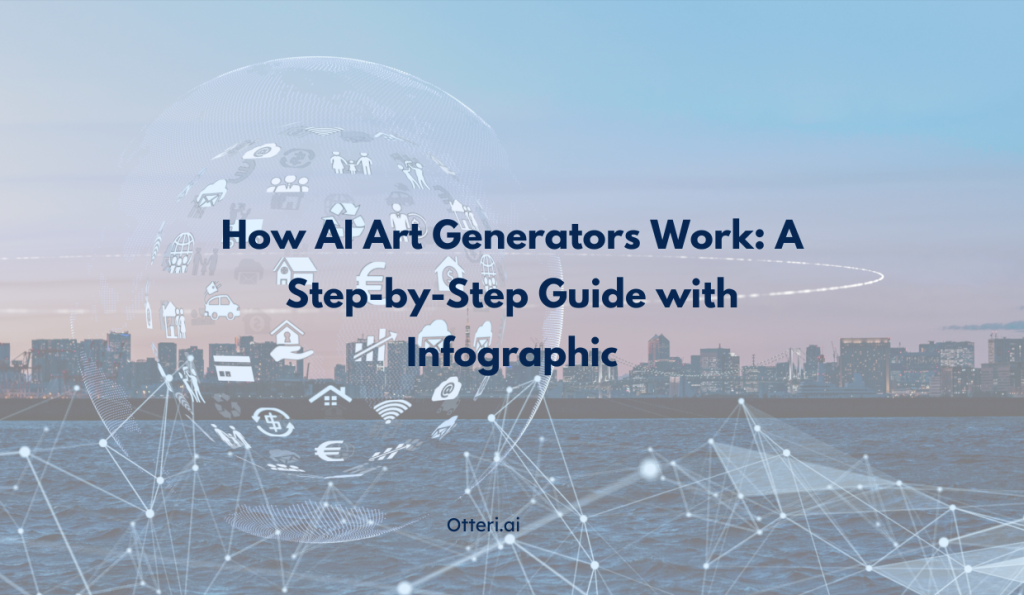
AI-generated art has transformed digital creativity, enabling users to create high-quality visuals from simple text descriptions. Whether you are a designer, artist, or someone exploring digital tools, AI art generators offer a powerful combination of technology and artistic expression.
This guide explains how AI art tools work, covering key concepts such as machine learning, neural networks, and diffusion models. By the end, you will understand how AI converts text prompts into visually compelling images.
What Are AI Art Generators?
AI art generators use artificial intelligence models to create images based on text descriptions. These systems analyze vast datasets of paintings, photographs, and digital artworks to learn and replicate different artistic styles.
Popular AI Art Tools
Some of the most well-known AI art generators include:
DALL·E 3 – Developed by OpenAI, known for high accuracy and realistic details.
Stable Diffusion – An open-source AI model that offers customization and control.
MidJourney – Specializes in highly stylized and artistic imagery.
Deep Dream Generator – Uses neural networks to create surreal, dreamlike effects.
Each of these models functions by interpreting user input and generating unique images based on extensive training data.
How AI Art Generators Work
Understanding the Text Prompt
The process begins when a user enters a text prompt. The more detailed and specific the prompt, the better the generated image.
For example:
“A fluffy white Persian cat sitting on a windowsill, watching raindrops fall on a cityscape, painted in soft pastel tones.” (Detailed and specific)
“A cat.” (Too vague)
The AI extracts key elements such as objects, colors, artistic styles, and composition to generate an appropriate image.
Converting Text into Data
AI does not “see” images as humans do. Instead, it uses Natural Language Processing (NLP) to break down the text prompt into numerical data, understanding context and relationships between words.
For example, if a prompt includes “cyberpunk cityscape,” the AI interprets it as an urban environment with futuristic elements, neon lighting, and dark color schemes.
Generating the Image Using Neural Networks
AI art tools rely on neural networks, which function similarly to how the human brain processes images. Two major AI models are used:
Generative Adversarial Networks (GANs) – Consist of a generator that creates images and a discriminator that evaluates their realism. While GANs were an early breakthrough in AI-generated art, they have largely been replaced by diffusion models due to limitations in quality and flexibility.
Diffusion Models – The current standard used by DALL·E, Stable Diffusion, and MidJourney. They start with random noise and gradually refine it into a detailed image, leading to higher resolution and more visually coherent results.
Training AI on Large Datasets
AI art models are trained on vast image datasets, sourced from public archives, licensed materials, and open-access collections. This enables the AI to understand artistic styles, lighting, color theory, and composition principles.
Through continuous training, the AI learns to generate original yet stylistically coherent images.
Enhancing the Final Image
After the initial image is generated, additional AI-powered refinements improve quality.
Super-resolution enhances clarity and detail.
Color correction adjusts brightness, contrast, and tone.
Fine-tuning improves textures, shadows, and small elements.
Some AI platforms also allow users to edit or regenerate specific sections of an image without altering the entire composition.
AI Art vs. Traditional Digital Art
| Feature | AI Art Generators | Traditional Digital Art |
|---|---|---|
| Speed | Creates images in seconds | Requires hours or days |
| Skill Requirement | No artistic experience needed | Requires drawing and design skills |
| Customization | Controlled through text prompts | Full creative freedom |
| Uniqueness | AI-generated variations | Handcrafted originality |
| Ownership | Raises copyright concerns | Clear authorship and ownership |
While AI-generated art is fast and accessible, traditional digital art offers greater control and artistic originality. Many artists are now integrating AI into their workflow as a collaborative tool rather than a replacement.
Real-World Applications of AI Art
AI-generated art is now widely used across industries such as:
Marketing & Advertising – Social media graphics, branding, and digital campaigns.
Gaming & Entertainment – Concept art, character design, and world-building.
Fashion & Product Design – Unique textile patterns and branding elements.
Interior Design & Architecture – AI-assisted visualization for layouts and decor.
NFTs & Digital Collectibles – AI-generated artwork for blockchain marketplaces.
As AI technology continues to advance, its role in creative industries will likely expand further.
Ethical and Legal Considerations
Copyright and Ownership Challenges
Since AI models are trained on extensive datasets, some of which may include copyrighted materials, questions arise regarding ownership and intellectual property rights.
Key concerns include:
Who legally owns AI-generated images?
Should artists receive compensation if their work is used in training data?
How can AI-generated art be credited fairly?
To address these concerns, many platforms are developing ethical training methods and copyright-friendly AI solutions.
Bias and Fairness in AI Art
AI-generated images can sometimes reflect biases present in their training data, leading to inaccurate cultural representations or lack of diversity in generated artworks. Developers are actively working on improving AI models to ensure more fair and inclusive results.
The Future of AI in Artistic Creativity
AI lacks human intuition, emotion, and personal intent. While it can generate impressive visuals, it cannot replicate the deeper storytelling and meaning that human artists bring to their work. The most promising future of AI art lies in collaboration, where AI serves as a tool to enhance and support human creativity.
Infographic: How AI Art Generators Work
(Insert a professionally designed infographic illustrating the AI art process: text prompt → data processing → AI model (GAN/Diffusion) → training → final image refinement.)
The Future of AI Art
AI art generators have revolutionized digital creativity, making it easier for anyone to create stunning visuals. However, AI is most effective when used as a tool to enhance human creativity, rather than replace it.